Music and dance have long been celebrated as cornerstones of Mediterranean culture, imbued with the ability to transcend mere entertainment. These art forms are deeply woven into the social fabric of Mediterranean societies, acting as a conduit for expression, communication, and community bonding. In recent times, the therapeutic potential of music and dance has gained recognition, particularly in the realm of mental health. Against the backdrop of vibrant Mediterranean rhythms and movements, individuals find solace and an outlet for emotions, thus contributing to an overall sense of well-being.

The Mediterranean’s historical relationship with music and dance is more than traditional; it is a testament to the power these practices hold in fostering social cohesion and providing individuals with a means of psychological release. Dance, as a form of therapy, has been observed to promote mental and physical health, offering a holistic approach to well-being. Therapeutic dance programs across the region have begun to flourish, with evidence suggesting significant benefits in addressing mental health issues, reducing stigma, and encouraging physical activity. These programs provide a supportive community space where individuals of all ages can engage with the transformative power of movement and rhythm.
Key Takeaways
- Music and dance hold therapeutic value beyond their cultural significance in the Mediterranean.
- Dance therapy programs demonstrate positive impacts on mental and physical health.
- Community-based dance initiatives offer inclusive spaces for enhancing overall well-being.
Table of Contents
Historical Perspective of Music and Dance in the Mediterranean
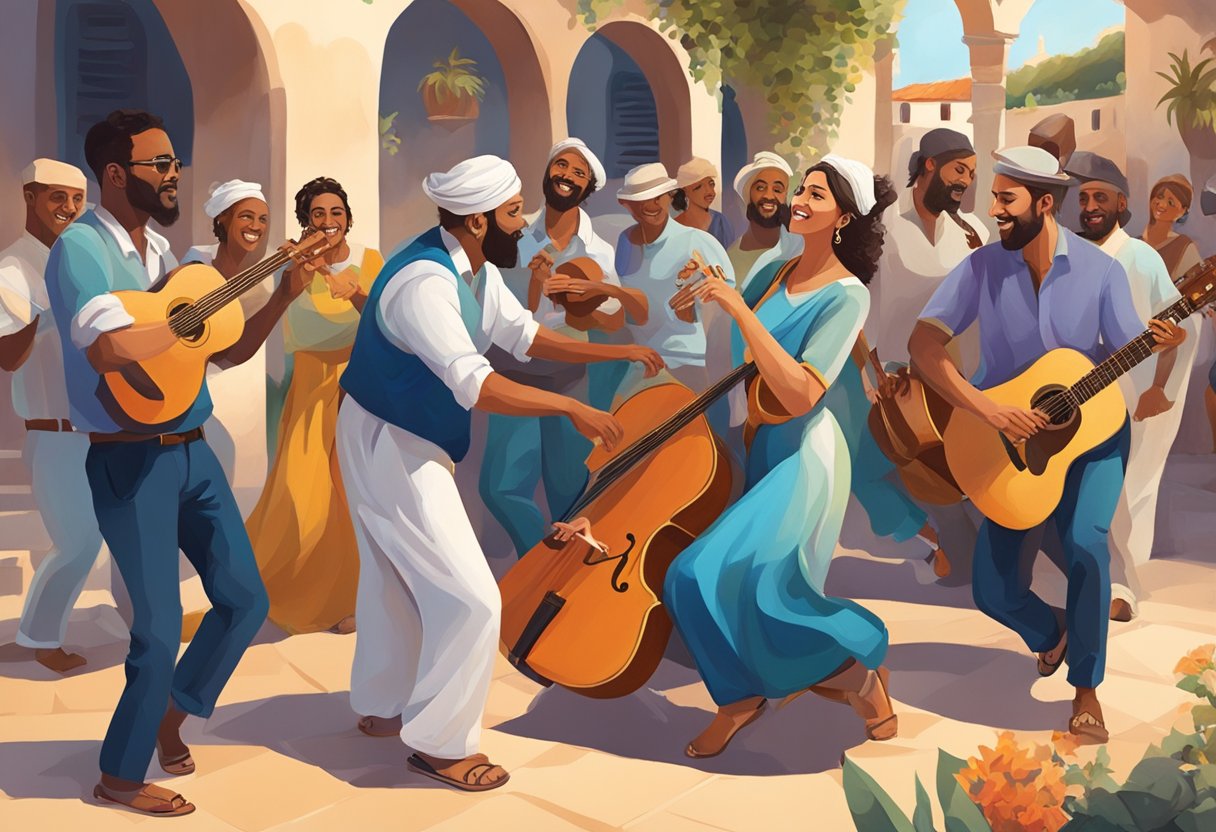
The Mediterranean has long been a melting pot of cultures, with music and dance serving as vital tools for community bonding and social cohesion. These artistic forms reflect the rich cultural tapestry of the region and have historically functioned as a barometer for societal values and social structures.
Cultural Significance of Dance
Dance in the Mediterranean has frequently mirrored the social dynamics of the times. It served as a medium for individuals to express collective identity and communicate cultural narratives. Each movement and rhythm held significance, acting as an archive of communal memory and tradition.
Evolution of Mediterranean Dance Forms
Dance forms in the Mediterranean region have progressively evolved while retaining a deep connection to traditional values. The tarantella, for instance, began as a therapeutic ritual and transformed into a celebratory dance. Across different communities, dance adaptations evidence the ebb and flow of Mediterranean society throughout history.
Music as a Social Glue
Mediterranean music has historically fostered social cohesion, uniting disparate groups through shared melodies and rhythms. This art form created a sense of community as it traversed different social contexts, from folk gatherings to royal courts, enabling connection across socioeconomic divides.
The Role of Dance in Mental Health
Dance, in its many forms, has been recognized as a powerful modality for the treatment and management of mental health issues. It combines physical activity, emotional expression, and social interaction, making it a multifaceted approach to mental wellness.
Dance as Therapy for Mental Illness
Dance therapy, as a form of expressive therapy, uses movement to help individuals achieve emotional, cognitive, physical, and social integration. Advocated by researchers and therapists, dance therapy has been instrumental in treating mental illnesses such as depression and anxiety. Treatments often involve structured dance routines or freeform movement, encouraged in a safe and monitored environment, allowing individuals to explore and express their feelings through body language.
Dance Interventions and Mental Health Conditions
Evidence suggests that dance interventions can serve as a beneficial treatment for various mental health conditions, providing relief from stress and improving overall emotional well-being. Dance interventions are recognized to enhance mood, reduce symptoms of depression, and manage anxiety levels. Structured dance programs, when used alongside traditional treatments, may offer a complementary approach to mental health care, promoting both physical and mental balance.
Music Therapy in Mental Health
In tandem with dance, music therapy is also a therapeutic tool for mental health enhancement. It involves the use of music to address emotional, social, and cognitive aspects of well-being. Music therapy can include listening to music, singing, playing musical instruments, or composing music, and it has been shown to effectively treat conditions like depression, anxiety, and stress.
Dance and Physical Health

Dance, an integral component of Mediterranean lifestyle, not only enriches cultural expression but also significantly contributes to physical health by enhancing cardiovascular fitness, promoting better sleep quality, and improving strength and flexibility.
Movement and Physical Activity
Engaging in dance increases an individual’s heart rate and improves the respiratory system’s function. Regular dance activity drives the cardiovascular system to efficiently pump blood, boosting circulation and oxygenation throughout the body. This uptick in movement and exertion can lead to better sleep patterns, with the body requiring rest to recover from the physical activity of dance.
Balance, Flexibility, and Strength
Dance routines often incorporate movements that demand both static and dynamic balance, which can enhance overall stability and coordination. The varied motions practiced in dancing also increase flexibility, crucial for a healthy musculoskeletal system. Moreover, dance acts as a form of resistance exercise, thereby building strength in the muscles used during the intricate dance steps and holds.
Impact on Non-communicable Diseases
Regular participation in dance can mitigate the risk of non-communicable diseases, particularly those related to the cardiovascular system. By maintaining an elevated heart rate through dancing, individuals can work to lower blood pressure and regulate sugar levels, thereby managing or preventing conditions like hypertension and type 2 diabetes. Dance, as a physical exercise, aids in maintaining a healthy weight, which is significant in preventing obesity, a known risk factor for numerous non-communicable diseases.
Mental Health Benefits Through Social Dance
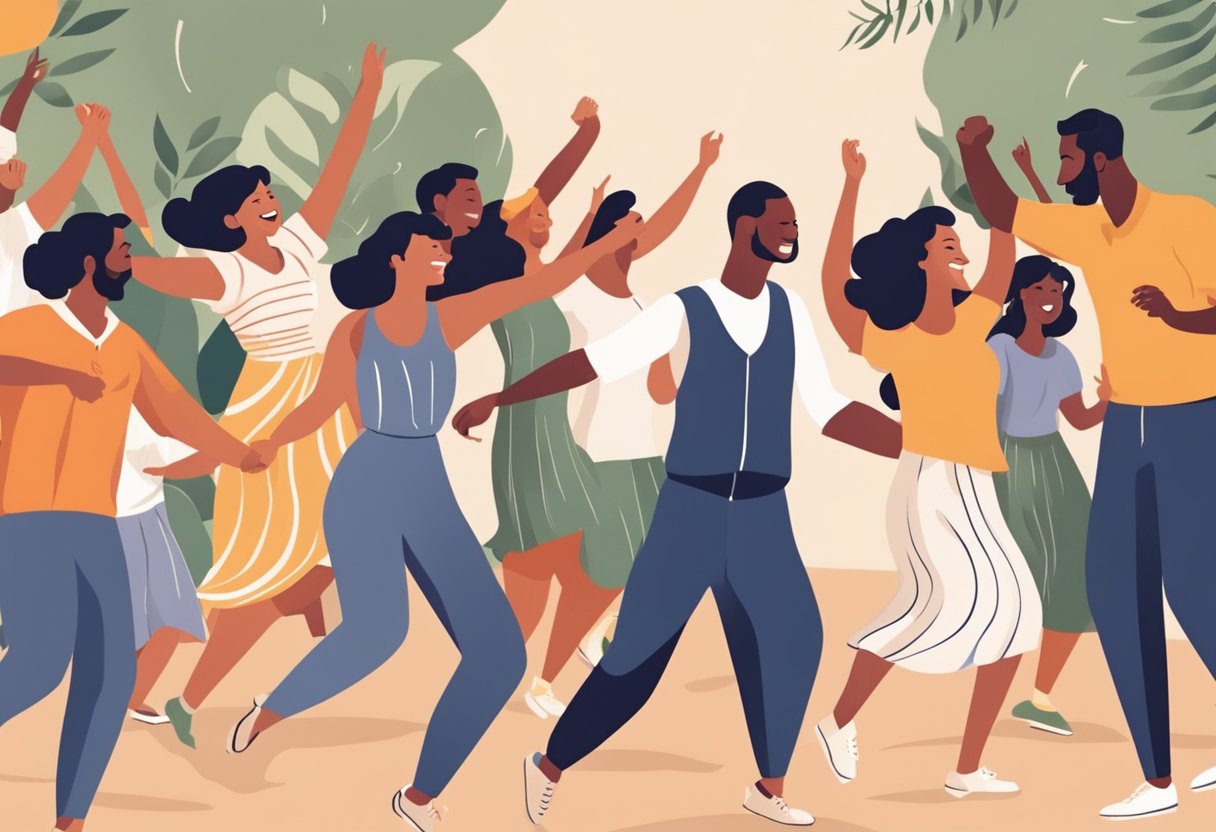
Social dance offers substantial benefits for mental health, providing avenues for inclusion, alleviating stress, and tackling loneliness particularly among the elderly. It plays a vital role in public health promotion through its impact on social connection and community building.
Inclusion and Community Building
Social dance is a powerful tool for fostering inclusion within the Mediterranean region. It transcends language and cultural barriers, inviting people of all ages and backgrounds to participate in a shared experience. Community events involving social dance encourage social interaction and cooperation, leading to stronger community ties and a sense of belonging.
- Inclusion: Integrating individuals into larger groups, enhancing societal cohesion.
- Community Impact: Strengthened social networks, leading to improved public health outcomes.
Social Dance as Stress Reduction
Participation in social dance has been linked to notable stress reduction. The rhythmic movement accompanied by music enables individuals to express themselves, release tension, and achieve a state of relaxation. Studies highlight that engaging in social dance can lead to lowered cortisol levels, indicating a physiological response to the stress-relieving nature of the activity.
- Expression: Physical movement in dance allows for emotional expression and tension release.
- Relaxation: Promotes a relaxed state, with physiological evidence of reduced stress markers.
Effects on Elderly and Loneliness
For the elderly population in the Mediterranean, social dance addresses key issues of loneliness and social isolation. By providing regular opportunities to engage with others, social dance improves both the mental and physical health of older adults, combating the effects of aging through cognitive stimulation and maintaining social connections.
- Loneliness Mitigation: Regular social interaction within dance groups reduces feelings of isolation.
- Cognitive and Physical Health: Dance routines offer cognitive challenges and physical activity, essential for aging populations.
Child Development and Dance

Dance has significant benefits in enhancing motor skills and cognitive function in children, particularly within the context of education and overall wellbeing. It serves as a dynamic tool for child development, combining physical activity with expressive performance.
Enhancing Motor Skills and Cognitive Function
Children experience considerable improvements in their motor skills through dance. Regular engagement in dance routines demands coordination, balance, and precision, which are foundational to developing robust motor skills. In studies examining the role of dance in children’s physical development, researchers have noted improvements in children’s spatial awareness and muscular strength. For instance, participation in Latin dance has been linked to improved physical health outcomes.
The cognitive benefits of dance are equally compelling. Children who participate in dance and music training may exhibit enhanced memory, attention, and problem-solving skills. A study assessing the cognitive effects of music and dance noted that children exposed to dance showed positive changes in various cognitive abilities, including improved spatial cognition and creative thinking.
Dance in Education and Child Wellbeing
Dance incorporated into education is a powerful avenue for promoting children’s wellbeing. When children engage with dance as part of their curriculum, they not only learn about different cultures and histories, but they also gain confidence and social skills. Additionally, dance can provide therapeutic benefits, serving as an alternative therapy for emotional and behavioral pathologies.
The positive psychological benefits of dance for children and adolescents are extensively documented. The inclusion of dance within educational settings can lead to better mental health outcomes, increased self-esteem, and a sense of belonging. The Effects of Dance Movement Therapy and Dance on Health-Related Psychological Outcomes meta-analysis highlights that dance can act as a medium for emotional expression and coping, contributing to a child’s holistic wellbeing.
Clinical Research and Evidence

Clinical research provides strong support for the role of music and dance in improving mental health in the Mediterranean region. Evidence from a multitude of studies, including systematic reviews and rigorous meta-analyses, underlines the effectiveness of these interventions in mental health care.
Systematic Reviews and Meta-analyses
Multiple systematic reviews have synthesized data across diverse studies to assess the impact of music and dance on mental health. A systematic review on the effects of Latin dance on physical and mental health utilized the Preferred Reporting Items for Systematic Reviews and Meta-analysis (PRISMA) protocols, while a meta-analysis evaluated the effectiveness of dance movement therapy and dance on psychological health outcomes. Such reviews are often indexed in databases like PubMed, offering comprehensive evidence for health professionals.
Research Methodologies in Dance and Music Studies
Energy is channeled into developing methodologies that are both robust and adaptable to capture the nuances of music and dance interventions. In the Mediterranean context, researchers employ methodologies compliant with Cochrane guidelines to ensure the highest standards of research quality. Dance studies often focus on cultural relevance to the Mediterranean region, ensuring that results are meaningful for the local populations.
Prevention and Long-Term Effects of Dance
When considering prevention, dance figures prominently in Mediterranean mental health discourse. The long-term effects of engaging in regular dance activities suggest a decrease in stress and social isolation, factors important for preventing mental health issues. Additionally, ongoing research continues to unravel how these forms of movement and expression can lead to sustained improvements in mental well-being.
Therapeutic Programs and Approaches

The Mediterranean region has seen an integration of music and dance into therapeutic programs, targeting mental health with specific techniques and therapeutic relationships.
Dance Therapy Techniques
Dance therapy in the Mediterranean makes use of culturally relevant dances, infused with traditional music, as a core component of therapeutic intervention. Latin dance is notable for its rhythmic movements, which can contribute to the improvement of physical and mental health outcomes. Techniques often involve structured and improvised movements, reflecting Mediterranean vibrancy, coupled with therapeutic goals. In practice, therapists might incorporate flamenco or sirtaki to connect with patients on a cultural level and enhance their emotional expression through movement.
Therapist and Patient Dynamics
In these therapeutic settings, the dynamic between therapists and patients is pivotal. Therapists are trained to be culturally sensitive and to establish a supportive environment that respects individuals’ boundaries while encouraging self-exploration through dance. They work collaboratively with patients, using dance as a medium for enhancing interpersonal skills and promoting cognitive and emotional integration. The dance movements serve as a non-verbal dialogue, bridging gaps and fostering a deeper understanding between therapist and patient.
Dance and Mental Health Across Age Groups

In the diverse age spectrum of the Mediterranean population, dance has been found to significantly contribute to mental well-being. From energetic youths to the more serene elderly, dance provides unique benefits tailored to each group.
Youth Engagement with Dance
Young people in the Mediterranean region benefit from engaging in dance activities, which support not only physical fitness but also mental health. Structured dance programs can enhance self-esteem and encourage social interactions, crucial aspects for the formative years. Studies indicate that Latin dance, for instance, can be particularly effective in improving mood and mental health among adolescents, creating a foundation for a balanced lifestyle.
Dance for Elderly’s Quality of Life
For the elderly, dance serves as a gentle yet powerful means to maintain and improve quality of life. It is not only a form of exercise that respects the limitations age might impose but is also a prolific social activity that can combat loneliness. Research has highlighted that dance interventions promote better balance and cognitive function in the elderly, contributing to enhanced daily functioning and mental health.
Dance and Mental Health in Men
Dance as a form of physical activity is often overlooked by men, but its benefits to mental health make it an invaluable tool. In the Mediterranean male population, dance can break the stigma surrounding the expression of emotions, providing men with an outlet for stress relief and emotional processing. As mental health awareness grows, more men are finding dance to be a powerful ally against anxiety and depression, leading to a healthier, more connected life.
Scientific Insights into Dance Practices
Scientific studies provide a deeper understanding of how engaging in various dance styles can influence mental health in the Mediterranean region. The following subsections explore different dance forms, from tango to contemporary, and their biopsychosocial impacts, as well as recent innovations in dance research.
Investigating Different Dance Styles
Different dance styles exhibit unique characteristics and potential health benefits. For instance, tango, often characterized by its passionate and precise movements, has been studied for its effects on mental health, particularly in improving mood and emotional well-being. Latin dance forms, such as salsa and rumba, which are vibrant and rhythmical, are known for enhancing physical fitness as well as social bonding. Folk dances, deeply rooted in Mediterranean culture, are not only a form of physical exercise but also serve to strengthen community ties and cultural identity. On the more formal end of the spectrum, ballet, with its disciplined and technical nature, is associated with improving cognitive functions and discipline. Jazz and contemporary dance, known for their expressiveness, have been observed to foster creativity and emotional expression.
Biopsychosocial Effects of Dance
The biopsychosocial model addresses the interconnections between biology, psychology, and socio-environmental factors. Dance incorporates this model by simultaneously engaging the mind and body within a social context. Structured dances like ballet demand a high level of physical discipline, which can lead to enhanced body awareness and control. In contrast, the improvisational aspect of contemporary dance can provide psychological benefits through the expression of emotions and the reduction of stress.
Innovations in Dance Research
Researchers in the field are now utilizing sophisticated quantitative and qualitative methods to study dance. There is a growing diversity of research that considers not only the physical and mental health effects but also the cultural and social significance of different dance forms. For instance, studies on folk dance look beyond physical benefits to understand its role in heritage and community well-being. Advances in technology enable the objective measurement of physical and psychological changes that occur during dance, facilitating a more comprehensive understanding of its benefits.
Promoting Physical and Mental Balance
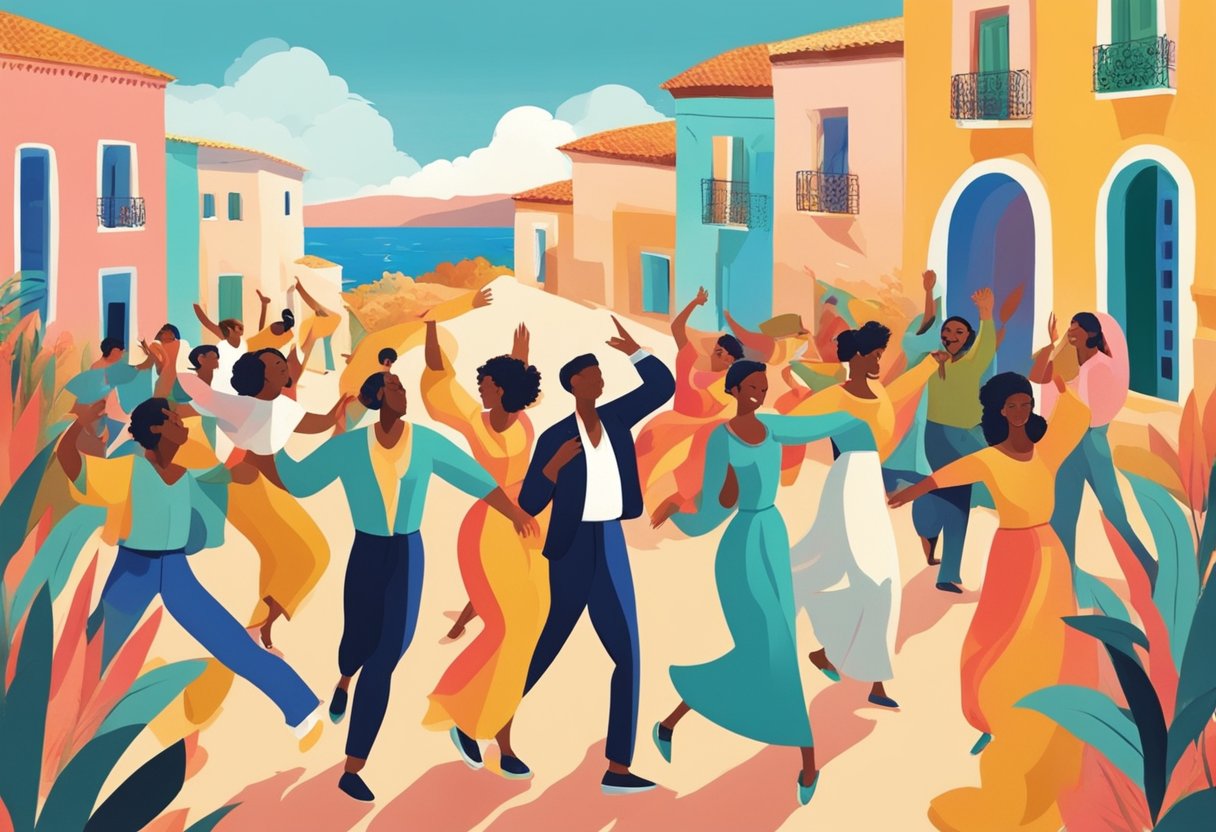
The Mediterranean lifestyle, known for its wholesome diet and vibrant dance traditions, plays a significant role in enhancing both physical and mental health. Embracing this lifestyle can lead to a state of equilibrium where emotional well-being and physical health support and strengthen each other.
Harmonizing Emotional and Physical States
The intertwining of music and dance within the Mediterranean culture is not only a form of expression but also a therapeutic tool for mental health. Mediterranean dance, characterized by rhythm and fluidity, encourages a sense of emotional release, reducing stress levels and promoting psychological balance. This physical activity leads to the release of endorphins, fostering a state of happiness and reducing feelings of depression.
A gluten-free Mediterranean diet contributes to this balance by providing essential nutrients without the added stress on the body that gluten may cause for those sensitive to it. Such a diet is high in fruits, vegetables, legumes, and whole grains, which are integral in maintaining steady blood sugar levels and emotional stability. The absence of gluten in the diet can alleviate symptoms related to gluten sensitivity, further contributing to mental clarity and overall balance.
Regular participation in Mediterranean dance and adherence to a gluten-free diet are complementary practices for maintaining physical and mental equilibrium. They are simple yet powerful ways to enhance one’s quality of life.
Community and Mental Health Advancement
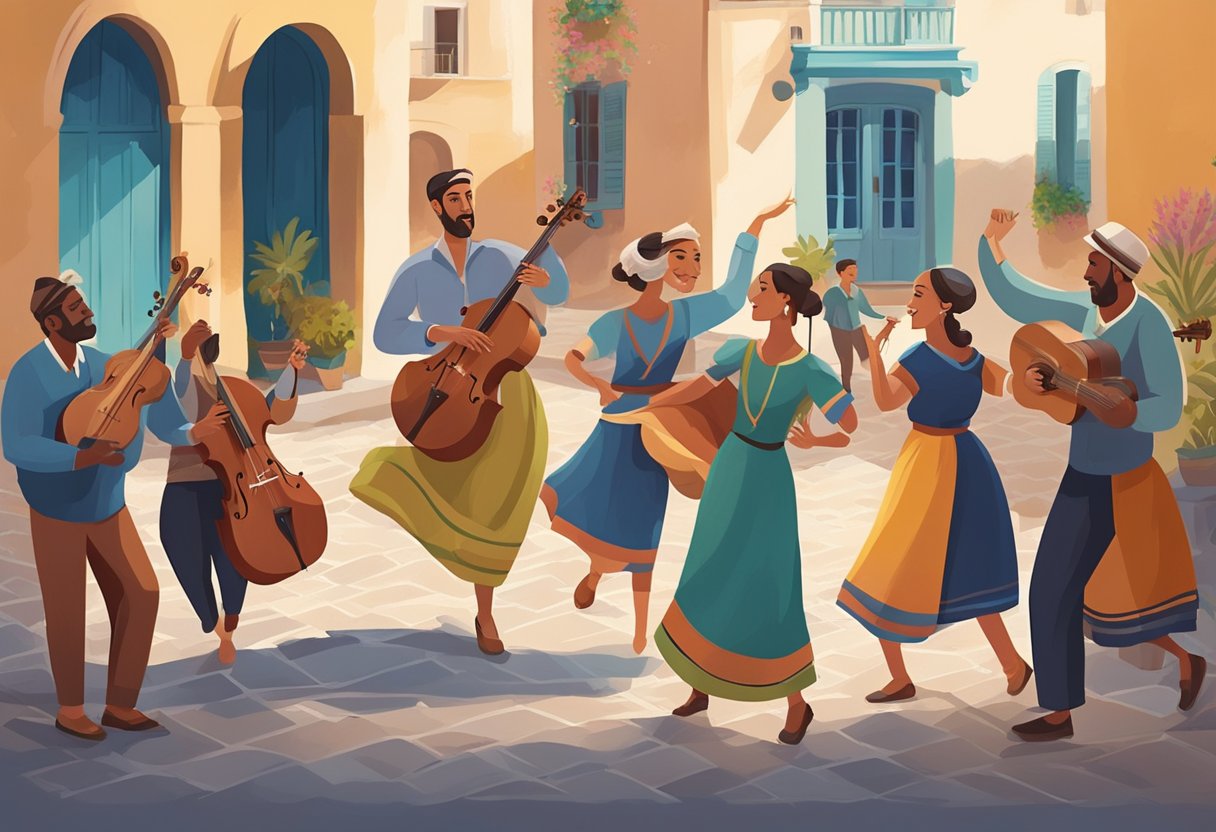
Community involvement plays a critical role in bolstering mental health outcomes. It extends the reach of health promotion beyond the individual, integrating social determinants of health within support networks and culture-specific activities like Mediterranean dance.
Building Support Networks
In Mediterranean communities, support networks foster an environment where mental health can thrive. These networks provide individuals with social resources, emotional assistance, and the opportunity to engage with peers who share similar health and lifestyle goals. Specifically, the glue that often holds these networks together is a shared interest or practice, such as adhering to a gluten-free Mediterranean diet, which not only addresses nutritional needs but also becomes a cornerstone for communal gatherings and shared experiences.
Health Promotion Through Community Dance
Latin dance, an integral part of Mediterranean culture, exemplifies health promotion through active community participation. Studies indicate that engaging in Latin dance can have significant benefits for physical and mental health. Community dance events not only encourage physical activity but also reinforce social bonds, creating a supportive network that helps to alleviate stress and foster emotional well-being. As individuals come together to enjoy the rhythms and movements characteristic of Mediterranean dance, they collectively contribute to a culture of health awareness where both the body and mind are nurtured.
Addressing Mental Health Stigma
In the vibrant cultures of the Mediterranean, music and dance are not just forms of entertainment; they are key tools in challenging the stigma that often surrounds mental health. These artistic expressions foster inclusivity and provide a non-verbal platform for advocacy.
Role of Dance in Breaking Barriers
Dance, particularly traditional forms such as those found in the Mediterranean region, has been instrumental in reducing stigma associated with mental health. It transcends linguistic boundaries, allowing for emotion and experience to be communicated without words. A systematic review examines the effects of Latin dance on physical and mental health, which provides a basis for understanding how Mediterranean dance can similarly influence mental well-being. Engaging in these activities can lead to increased empathy and understanding among participants, thereby reducing prejudiced attitudes and misconceptions.
Advocating for Inclusivity in Mental Health
The power of music in fostering a community atmosphere is key to advocating for inclusivity in mental health care. Musical interventions like choirs and community music programs create spaces where individuals feel valued and included, irrespective of their mental health status. The research touches on the transformative power of music in mental well-being, suggesting that music can enhance prosocial behavior and social connectedness. Such initiatives encourage the destigmatization of mental health issues by promoting acceptance and unity within diverse societies.
Dance in the Context of Specific Disorders

Dance therapy reflects a burgeoning field within mental health treatment aimed at harnessing the rhythmic and expressive power of movement to address specific psychological disorders.
Dance Interventions for Dementia and Parkinson’s
Individuals with dementia and Parkinson’s disease have shown encouraging responses to dance interventions. Structured dance programs, specifically tailored for these conditions, can potentially enhance cognitive function, as well as improve motor skills. A study titled Effects of Dance Movement Therapy and Dance on Health-Related Psychological Outcomes suggests that the combination of music and movement helps in establishing new pathways in the brain, which can be crucial for dementia patients. In the case of Parkinson’s, the rhythm and flow of dance facilitate smoother movement transitions and can reduce episodes of freezing.
- Cognitive Benefits: For dementia patients, participation in dance routines can lead to improved memory and spatial recognition.
- Motor Skills: Parkinson’s patients often experience improved balance and coordination, as reported in interventions documented by Dance Movement Therapy and Dance on Health-Related Psychological Outcomes.
Impact on Depression and Anxiety Treatment
Dance therapy has emerged as a vital component in the treatment of depression and anxiety, often used in conjunction with a Mediterranean diet. Research emphasizes that dance can alleviate symptoms of depression and anxiety by promoting the release of endorphins and serotonin. A systematic review found on Effect of Latin Dance on Physical and Mental Health corroborates the positive effects of Latin dance on mood enhancement and social interaction, which are crucial elements in managing symptoms of depression and anxiety. The emphasis on group settings in dance interventions reinforces social bonds and support networks that are pivotal for mental health.
- Mood Enhancement: Regular engagement in dance can enhance the emotional state of individuals with depression.
- Social Interaction: For those with anxiety, dance offers a safe space for social interaction and community connection.
Assessing Outcomes and Measuring Impact
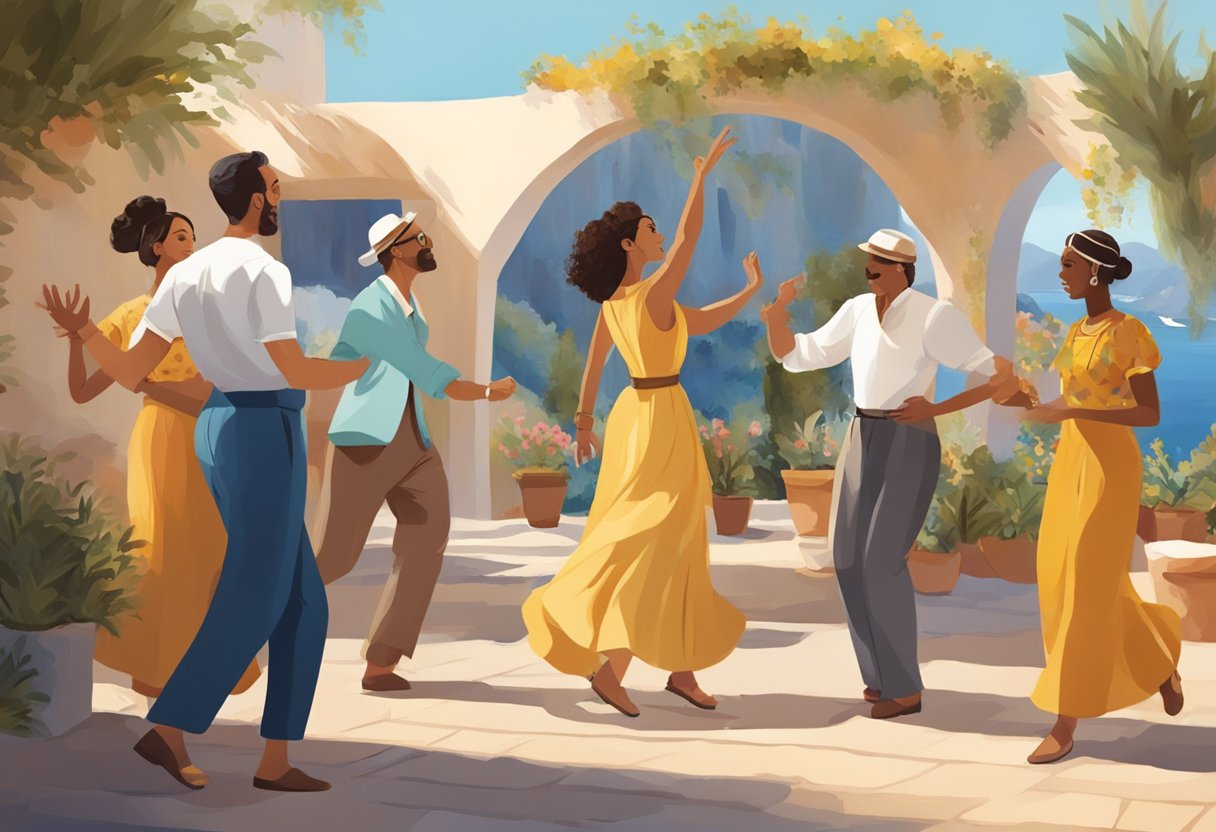
Measuring the impact of music and dance on Mediterranean mental health requires a robust methodology that can effectively capture both quantitative and qualitative data.
Randomized Controlled Trials in Dance
Randomized controlled trials (RCTs) are the gold standard for assessing outcomes within the field. Specifically, these trials have illuminated how structured dance programs can enhance emotional well-being and cognitive function in Mediterranean populations. For instance, a study revealed that dance can provide substantial physiological and psychological benefits for both healthy individuals and those with medical conditions, suggesting that dance should be more seriously considered for integration into public health policies.
Qualitative Assessments and Patient Stories
While RCTs offer important metrics, qualitative assessments and patient narratives offer a more nuanced view of the individual impact of dance and music therapy. These stories and testimonials complement the empirical data by highlighting personal improvements in mood and social interaction, further demonstrating the therapies’ therapeutic values for mental health.
Methodological Challenges and Study Bias
Despite the benefits of both quantitative and qualitative methods, researchers must also acknowledge the methodological challenges and biases inherent in studies. RCTs can suffer from limitations such as small sample sizes or participant dropout, while qualitative assessments are sometimes criticized for subjectivity. To mitigate bias, researchers often use tools such as observational measures, though these can also indicate bias, emphasizing the need for ongoing methodological refinement within this research area.
Future Directions in Dance and Mental Health
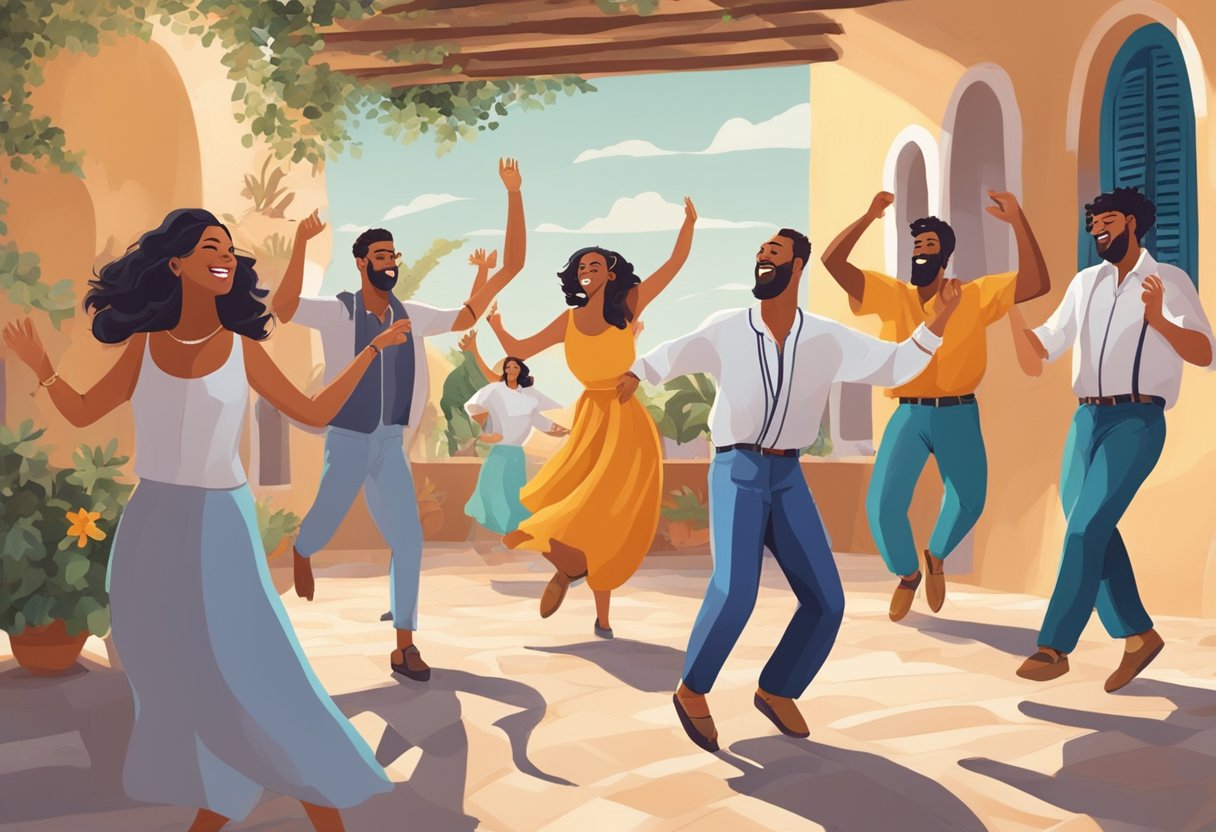
As research continues to reveal the beneficial impacts of dance on mental health, significant developments are expected in areas of public health policy and therapy modalities.
Policy Implications and Funding
Public health initiatives are increasingly recognizing the role of cultural arts in promoting mental wellness. With evidence supporting dance as a tool for improving mental health outcomes, policy makers are tasked with integrating dance programs into public health strategies. Funding allocations may shift to support these initiatives, as they could serve as preventive measures for mental health issues. In the Mediterranean, where dance is an integral part of the culture, governments might consider subsidies for dance therapy programs or allocate funds for public institutions to incorporate dance into their mental health services.
Emerging Trends in Dance Therapy
The evolution of dance therapy is marked by the incorporation of technological advancements and the adaption of diverse cultural practices. In Mediterranean regions, the richness of cultural dances could be harnessed to develop specialized therapies that resonate with the population. Furthermore, innovations such as virtual reality could enable access to dance therapy in remote areas, potentially broadening its impact. These emerging trends in dance therapy are likely to become more prevalent within mental health services, encouraging a more holistic and culturally sensitive approach.
Through these developments, dance is positioned to become a more recognized and funded aspect of mental health policy. Both policy implications and emerging trends in dance therapy signal a future where interventions are tailored to the cultural context of the population, potentially leading to improved mental health outcomes on a wider scale.
Conclusion

In the Mediterranean region, the integration of music and dance into mental health therapy has been met with positive outcomes. Music therapy is recognized for its ability to enhance emotional expression and encourage social interaction, contributing to overall mental well-being. Similarly, dance serves as a therapeutic tool, fostering physical health while also improving psychological states.
The incorporations of these artistic modalities within therapy sessions have illustrated benefits. For instance, music’s soothing properties can assist individuals in managing stress and anxiety. Dance, on the other hand, combines movement and rhythm, promoting both physical exercise and emotional release.
Furthermore, these interventions have been notable for their non-invasive nature and their capacity to transcend cultural and language barriers, making them an excellent choice in a diverse region like the Mediterranean. The active participation in music and dance not only supports mental health but also strengthens communal ties – a critical aspect of Mediterranean culture.
To encompass the varying needs in mental health therapy, practitioners often adopt a personalized approach. This fosters a deeper connection between the individual and the art forms, enhancing the therapeutic experience.
In summary, the Mediterranean’s embrace of music and dance in mental health signifies a holistic approach to therapy. These timeless cultural elements continue to demonstrate their intrinsic value, shaping the landscape of mental health care with promising future implications.
Frequently Asked Questions
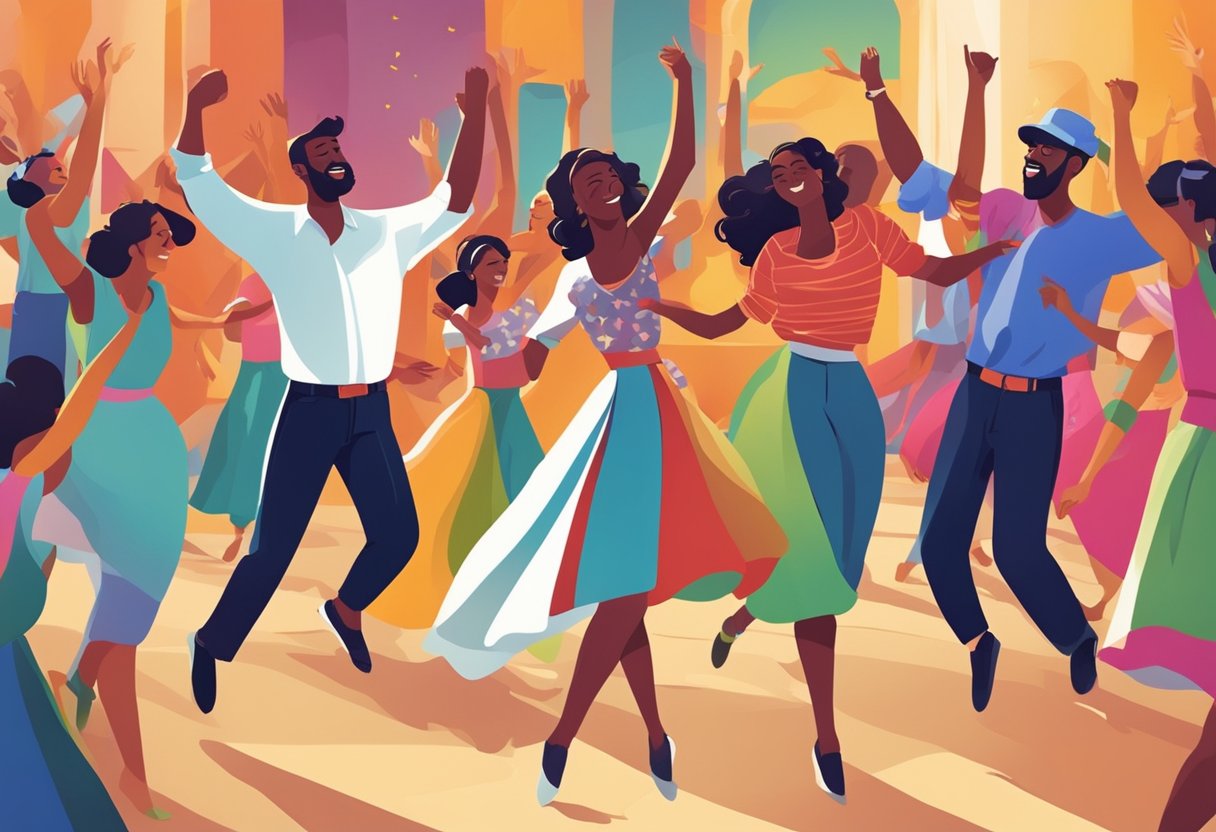
Music and dance are integral to Mediterranean culture and have been shown to support mental health. These questions address the particular psychological benefits they can provide.
How does participation in dance impact psychological well-being?
Participation in dance, especially traditional Mediterranean styles, can enhance psychological well-being by fostering social connection and physical activity, both of which are beneficial for mood and self-esteem.
What are the proven mental health benefits of engaging in music therapy?
Music therapy, including listening and creating music, has been associated with reduced anxiety, improved mood, and better stress management. These mental health benefits align with promoting an overall sense of well-being.
Can regular involvement in music and dance activities reduce symptoms of depression?
Regular engagement in music and dance activities has been linked to a decreased level of depression symptoms due to their potential to elevate neurotransmitter levels related to happiness and relaxation.
What does research indicate about the role of music and dance in stress management?
Research indicates that music and dance can play a significant role in stress management by providing an emotional outlet and physical activity that helps to reduce stress and improve coping mechanisms.
In what ways can traditional Mediterranean dance forms promote emotional health?
Traditional Mediterranean dance forms promote emotional health by encouraging expression through movement and rhythm, which can serve as a therapeutic form of emotional release and community bonding.
How does the incorporation of music and dance in lifestyle interventions support mental health maintenance?
Incorporating music and dance into lifestyle interventions supports mental health by offering an enjoyable way to improve mood, reduce stress, and increase physical activity—all of which contribute to better mental health outcomes.



